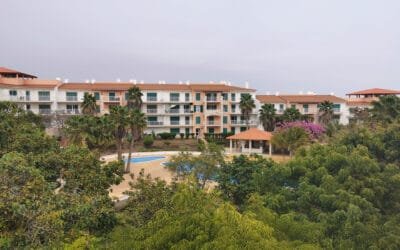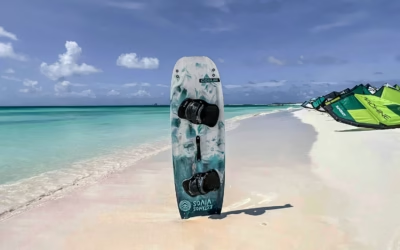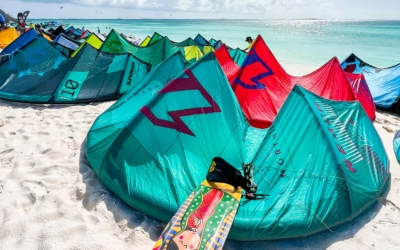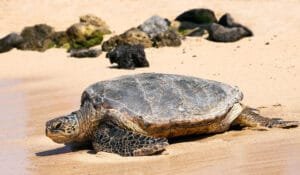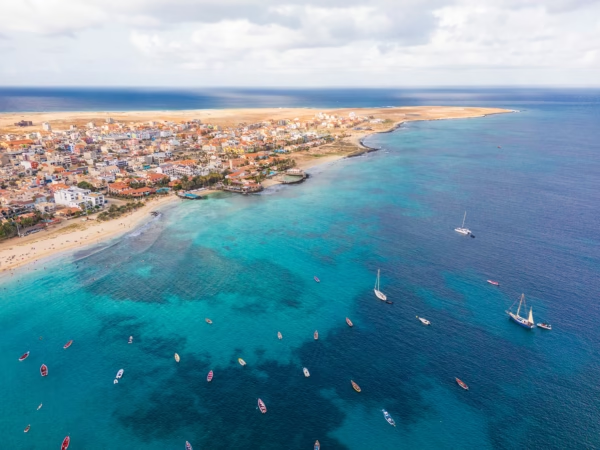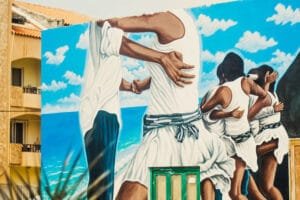Kitesurfing on Sal Island: All You Need To Know
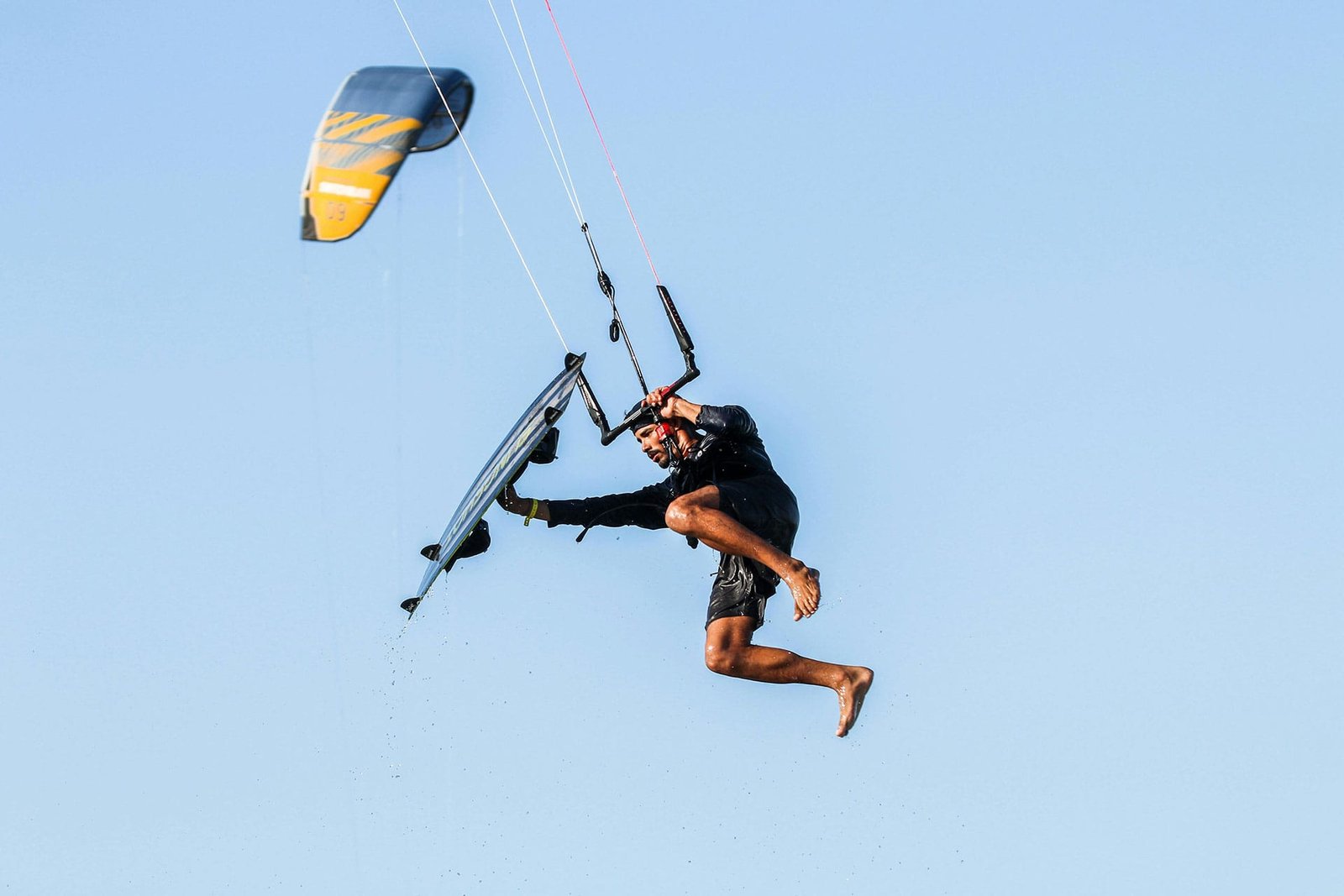
Kitesurfing on Sal Island
On any given winter day in Sal Island’s waters, dozens of colourful kites dance above the turquoise Atlantic. Sal – a small, sun-baked isle in the Cape Verde archipelago off West Africa – has become a world-class kitesurfing destination, blessed with consistent trade winds, warm temperatures, and a laid-back atmosphere. It’s a place where beginners can take their first rides in gentle bays while pros tackle some of the planet’s best waves.
This comprehensive guide explores why Sal Island is a kitesurfer’s paradise, from its reliable wind and top spots for every skill level, to reputable kitesurf schools, local tips, and even what to do on a rest day. Whether you’re a seasoned rider chasing winter wind or a traveller drawn by the island’s mellow vibe, kitesurfing on Sal Island is an unforgettable experience.
Sal’s Ideal Weather: When to Visit
Steady Winds
One of Sal’s biggest draws is its steady wind and pleasant weather nearly year-round. The island is swept by consistent northeast trade winds from roughly November through June, blowing almost daily at speeds of about 15–25 knots – perfect for kitesurfing. This reliable wind pattern makes Sal a prime winter escape for European kitesurfers, as conditions peak when it’s cold back home. November to April is generally considered the prime kitesurfing season, with near-guaranteed wind and warm sunshine. Even outside these months, you’ll often find breezes (though July–September bring lighter winds and occasional rain).
Importantly, the wind at Sal blows side-onshore on the main kite beaches, which means it will carry you back toward land – a reassuring safety factor for learners. The direction is typically NE to E, delivering clean wind especially on east-facing spots. In fact, Kite Beach (Sal’s most famous spot, more on this below) faces due east and enjoys less turbulent onshore wind compared to beaches that face south or west.
Air & Water Temperature
Air and water temperatures remain comfortable throughout the kite season. Daytime highs hover in the mid-20s °C (mid-70s °F) even in winter, and it rarely rains on Sal. From December to March (the coldest period), you can expect temperatures of about 22–25°C during the day and 18–20°C at night. Water temperature stays around 21–23 °C in winter, so many riders wear a shorty wetsuit or a thin 3/2mm long wetsuit for extended sessions. Later in spring and summer, the ocean warms up enough that boardshorts or swimsuits suffice on hotter days.
Don’t forget high-SPF sunscreen and a rash guard for sun protection – the UV index is high year-round under the tropical sun. With its warm, dry climate and constant breeze, Sal offers ideal kitesurfing weather when much of the Northern Hemisphere is bundling up for winter.
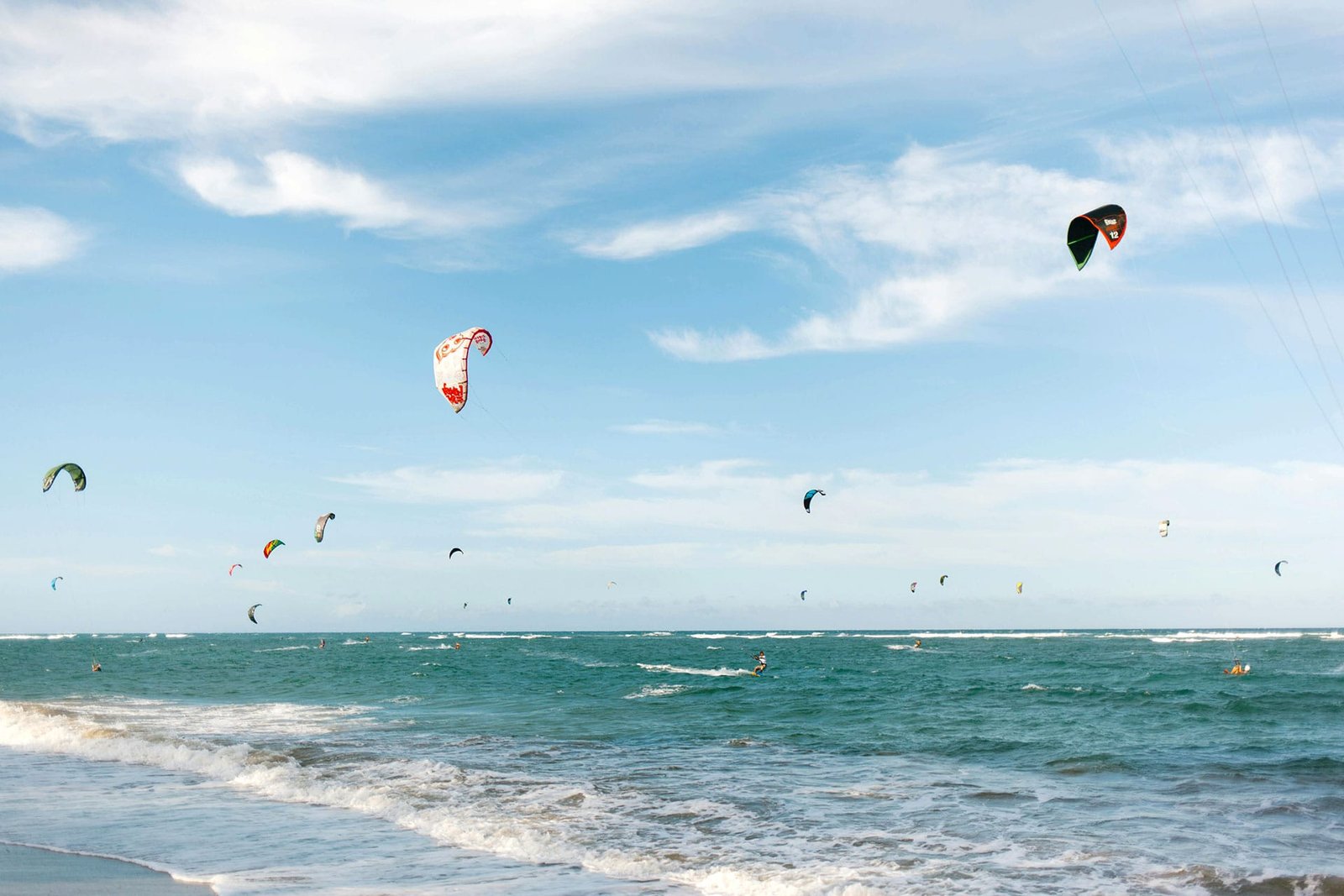
The Best Kitesurfing Spots on Sal Island
Despite Sal’s small size, the island offers a surprising variety of kitesurfing spots – from flat-water bays perfect for learning to world-famous wave breaks that attract champions. Most kiting centres around the southern part of Sal near the town of Santa Maria, where wide beaches and different exposures to wind and swell create distinct riding areas. Here are the must-know kitesurf spots on Sal and what to expect at each:
Kite Beach: All Levels Welcome at Sal’s Kiteboarding Mecca
A kitesurf instructor guides a beginner at Kite Beach, Sal’s most popular spot for learning and freeriding. Kite Beach (also known as “Cabeça de Salinas”) is the epicentre of kitesurfing on Sal Island – a 3 km long sandy beach on the southeast coast dedicated almost entirely to kiteboarding. This spot is ideal for all skill levels, which is why it is so popular. Here, the wind blows side-onshore (cross-on) from the left as you face the ocean, ensuring a safe return to the beach on every run.
The bay at Kite Beach features ample open space, a lovely sandy bottom, and no obstructions, providing forgiving conditions for newcomers. Near the shore, the water remains relatively calm and shallow, creating a flat-water area where beginners can practice riding or performing water starts without battling big waves. (It’s not unusual to see instructors and first-time kiters waist-deep, flying small trainer kites at the water’s edge.)
Meanwhile, more experienced riders aren’t bored – further out, Kite Beach serves up a bit of everything. On the outside reef, waves form when the Atlantic swell wraps onto Sal’s east coast. These waves are typically moderate and fun to ride, offering a great intro to wave kiting or a playground for strapless freestyle specialists. In fact, Sal is renowned for nurturing strapless wave talent – the island is home to multiple world champion wave riders (like locals Mitu Monteiro and Airton Cozzolino), many of whom honed their skills in the friendly waves of Kite Beach before taking on the heavier surf on Sal’s west coast.
Despite its popularity – and Kite Beach can get busy in peak months – the stretch of sand is so long that there’s plenty of room for everyone, from freestyle twintip riders to foilers and kite schools with students. Expect a mild wind chop and a small shore break near the beach, but nothing too intimidating for intermediates.
The atmosphere at Kite Beach is famously relaxed and social. Several kite schools and centres have set up right on the sand here, each with its own shaded hut or beach club. The most famous is Mitu & Djo Water Sports Centre, run by Cape Verde’s kite legend Mitu Monteiro – their school has a bar/café and chill-out area, making it a popular hangout between sessions. Other outfits, such as Surf Hub (Kiteboarding Club), Kite & Tonic, and local instructors, also operate on Kite Beach, so assistance is always on hand.
Typically, if you’re staying in Santa Maria town, your school will drive you the 5–10 minutes out to Kite Beach for lessons – a shuttle service many centres provide. The beach has no big hotels or buildings, just sand, so it truly feels like a dedicated kite zone. With its steady wind (Nov–May), side-on orientation and welcoming vibe, Kite Beach is the #1 spot that “you can’t miss” for kitesurfing on Sal. It’s the perfect training ground to build confidence, and on a good day, it’s also an intermediate freerider’s paradise.
Santa Maria Bay: Freeride and Training in the Heart of Town
Just around the corner from Kite Beach is Santa Maria Bay, wrapping along Sal’s southern coast in front of the main resort town. Santa Maria’s three km-long beach of golden sand is not only great for sunbathing – it also offers kitesurfing conditions in certain areas, especially for independent riders looking for a beautiful setting. The wind here tends to blow side-shore from the left (east) across the bay.
In the centre of Santa Maria Bay, large hotels and wind-blocking structures mean it’s not a kite spot. However, on the east end (toward a point called Ponta Leme Bedje) and west end (Ponta do Sinó), kitesurfers do take to the water when conditions allow.
The east side of Santa Maria (near Ponta Leme) often has side-onshore wind and relatively flat water inside the bay. This area is used by some schools for beginner lessons or practice when it’s not too crowded – in fact, sections of the bay are zoned for kitesurfing vs. windsurfing to keep learners safe.
The left-side shore is suitable for wind, has a sandy bottom, and lacks obstacles, making it an okay place to learn. However, most beginners are generally shuttled to nearby Kite Beach, where the wind is cleaner and there’s more open space.
Santa Maria’s bay, however, is excellent for intermediate and advanced riders looking to cruise in front of town. The water offers a mix of flat sections and small chop or gentle swells, making it great for practising jumps or freestyle tricks in view of the beachfront hotels. It’s not a challenging spot, but it’s picturesque and convenient – you can launch right off the beach by your hotel if you know what you’re doing (just be mindful of designated kite zones and beachgoers).
One popular launch in Santa Maria is located behind the old pier (Pontão), where local windsurfing centres, such as ION Club, have a base. ION Club Santa Maria maintains a kite launch and landing area, typically reserving it for independent kiters or their advanced lesson students. Beginners enrolled with them are taken to Kite Beach by truck. If you set out from here, you’ll find flat water turning to small waves farther out, with plenty of room downwind until Ponta Sino.
Do note: when the wind swings more northeasterly, parts of Santa Maria Bay can become offshore or gusty, making it less suitable for novices (safety boats may be needed if you drift out). Always ask the local centres about the day’s wind direction if you’re unsure.
For most visiting kiters, Santa Maria Bay is a bonus spot – great for a freeride session when conditions line up or when you want a change of scene. And the best part is when you’re done, you’re steps away from a cold drink at a beach bar. Santa Maria town is full of life: after kiting, you can grab a fresh coconut at a beach café or stroll the Pontão pier where fishermen haul in the day’s catch (stingrays often glide in the clear water below as onlookers watch).
The combination of easy ocean conditions and nearby amenities makes Santa Maria a pleasant and laid-back spot to enjoy kitesurfing in a relaxed setting.
Ponta Preta: World-Class Waves for Expert Kiters
A few kilometres west of Santa Maria lies the legendary Ponta Preta – a place that sparks excitement in the kitesurf and surf world. Ponta Preta is Sal’s most famous wave spot, a place that has hosted international kite wave competitions and produced world champions.
But be warned: Ponta Preta is only for very experienced riders – it’s a gnarly wave break with serious power and hazards. When a winter swell hits, Ponta Preta delivers big, glassy waves that can reach 3–6 meters, peeling flawlessly and breaking close to a rocky point. In prime conditions, it’s arguably one of the best right-hand waves on the planet for kitesurfing – fast, hollow, and long.
The wind at Ponta Preta blows cross-offshore from the left (when the NE trades are in effect), which is what makes the waves here so clean and smooth. However, that wind direction also blows you out to sea from the wave, meaning that if anything goes wrong, self-rescue skills are mandatory.
The launch from the beach is tricky: there’s often a pounding shore break and a rocky shoreline, so timing your launch and landing is critical. Most riders walk up to the point itself, pick a lull between sets, then scramble into the water and go fast to get outside. It’s definitely not a place for learning – but for advanced wave riders, Ponta Preta is the ultimate test and thrill. Dropping into a double overhead wave here, carving under a heaving lip with offshore wind holding the face clean, is an experience you won’t forget.
Even if you’re not ready to kitesurf Ponta Preta, it’s absolutely worth a visit as a spectator. On big swell days from December through April, you can sit on the sand or rocks and watch local pros like Mitu Monteiro or Airton Cozzolino tearing apart waves with jaw-dropping style.
The GKA Kite World Tour frequently kicks off its season in Cape Verde with a wave event at Ponta Preta, drawing the world’s best strapless riders to these breaks. The atmosphere when Ponta is firing is electric – crowds gather to cheer when someone gets a deep barrel or huge aerial off the lip.
If you’re a surfer, you might even paddle out at first light before the wind picks up (Ponta Preta is equally famous in the surfing community). Just keep in mind it gets very crowded with pros and local experts when it’s good.
For kiting, only attempt Ponta Preta if you’re truly confident in strong winds, wave riding, and self-rescue. If not, enjoy the show from shore with a camera in hand.
Ponta Preta’s combination of perfect waves and expert-only conditions has cemented Sal’s reputation in the kitesurf world – it’s the island’s wild side, a striking contrast to the forgiving learner zones of Kite Beach.
Other Notable Spots: Ponta do Sinó, “Secret” Waves and Downwinders
Beyond the three main areas above, Sal Island has a handful of other spots that intrepid kitesurfers may explore – usually depending on swell, wind direction, and skill level.
On the southwest tip of Santa Maria Bay lies Ponta do Sinó, a minor point break that can produce small, fun waves when west swells wrap in. It’s considered a more intermediate-friendly wave spot compared to Ponta Preta, though still best for confident riders (the waves are smaller, but there are rocks and the wind can be gusty).
Further up the west coast are breaks known locally as Ali Baba, Secret Spot, Canoa, Coral Joule, and others. These are seldom visited, except by local experts or guided groups, as they require knowledge of the terrain and likely a 4×4 vehicle to reach. In winter (Dec–March), when Sal “picks up excellent swells,” these west/northwest-facing reefs come alive and offer a variety of right and left-hand waves. Some are surfing spots that can be kiteable when the wind angle permits.
If you have the necessary skills, linking up with a local guide or school for a downwinder along Sal’s coast can be an epic adventure. Downwind trips are occasionally organised, allowing experienced kiters to cruise with the wind from one point to another, stopping at various breaks along the way.
For those who prefer flat water or freestyle, one option is to do a downwinder from Kite Beach back to Santa Maria: the journey will take you along the eastern and southern shoreline and can be a blast in strong wind (with a mix of chop and small waves en route). Always inform someone and never go alone if attempting such runs.
Lastly, for foilboarders or wingfoilers, even light wind days can be enjoyable at spots like Ponta Leme or the edges of Santa Maria Bay, where the water is glassy. In short, Sal offers far more than meets the eye – there’s enough variety to keep riders of all styles busy, provided you venture beyond the main areas (and come in the right season).
Just remember that many lesser-known spots have no rescue or facilities, so they’re only advisable for self-sufficient riders. For the majority of visitors, Kite Beach, Santa Maria, and a pilgrimage to watch (or kite) Ponta Preta will provide a complete, satisfying Sal kitesurfing experience.
See also
- List of Kitesurfing Schools, Rentals and Services on Sal
- Tips for a Smooth Sal Kitesurfing Trip
Kitesurfing on Sal: Closing Thoughts
Sal Island has rightfully earned its place on the kitesurfing map. Few destinations can match its combination of consistent winds, varied spots, easy travel logistics, and welcoming culture. From the moment you feel the warm trade winds on your face and launch your kite over the crystal-clear waters of Kite Beach, you’ll understand why so many riders fall in love with this island.
Sal offers something for everyone: gentle bays where beginners get their first achievements and heavy waves where champions push their limits. Yet, beyond the technical attractions, it’s the island’s laid-back charm – the slow pace, warm sun and the sunset jams at the beach bar.
In the words of many repeat visitors, Cape Verde’s allure lies in how effortlessly it blends adventure and relaxation. You might spend the morning ripping across the lagoon powered by that steady winter wind, and the afternoon lounging barefoot in the sand, watching fishermen and enjoying a cold drink. By the end of your stay, you’ll have your kite skills improved, for sure, and you may also have soaked up a bit of the island’s soul.
Cape Verde is “from the heart” – and you feel it. So, whether you’re seeking an ultimate kitesurfing getaway or just a unique tropical holiday with a twist, Sal Island will deliver.
Pack your kite (or just your sense of adventure), and get ready for a kiteboarding experience that is as enriching as it is exhilarating. No worries – you’ll be in good hands and great winds on Sal.
Boa viagem e bons ventos! (Safe travels and good winds!)
Bibliography
- Cape Verde, Sal, Kitesurfing and Wing Guide, Kitesurfing Magazine, February 17, 2024;
- Cabo Verde Travel Guide, Joseph Perfitt, Lucy Pilgrim;
- Sal, Cape Verde: The Ultimate Winter Destination for Watersports, ION Club;
- Kitesurfing in Sal, Cape Verde, Kite Guide, January 6, 2025;
- The ultimate guide to kitesurfing in Sal, Cape Verde, Kiteadvice;
- Surf Hub Cabo Verde – Kitesurf, Wingfoil & Surf School on Sal;
- Sal, Cape Verde school recommendations, Reddit;
- Kitesurf Lessons, Ion Club Sal – Santa Maria;
